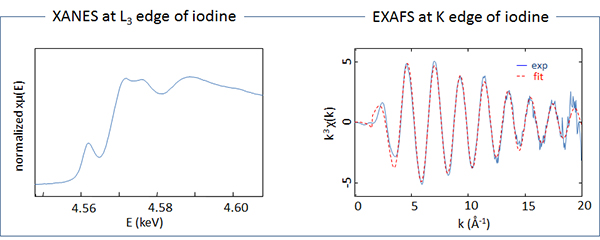Among the fission products of uranium and plutonium, iodine 129 is a radioactive element with a half time of ~16 millions of years.
Many studies have thus been performed to propose ways to optimize its storage in deep geological repositories, for example by trapping it in robust materials. A team of French scientists recently had a closer look at inorganic materials from the apatite family as potential hosts for the storage of iodine under iodate form. Their work was published in RSC Advances.
In order to optimize the properties of these new materials, details of their structure at the molecular scale had to be determined. Iodate-substituted apatite phases had already been studied by a series of analytical techniques such as powder X-ray diffraction, solid state NMR, or infrared and Raman spectroscopies. However, these first analyses did not give precise information on the local environment of the iodate in the apatite phase.
In this context, the research team tried to characterize the local environment of iodine inside these materials, using X-ray absorption spectroscopy techniques (EXAFS and XANES) at both the K and L3 edges of iodine. Experiments were performed on the SAMBA and LUCIA beamlines at Soleil, and were combined with computational modeling based on Density Functional Theory (DFT). The use of synchrotron radiation was absolutely necessary, and provided novel information on the structure of these materials. The analysis of the I K-edge EXAFS spectra revealed in particular the local disorder around the iodate anion within the apatite lattice. DFT calculations confirmed this observation.

FIG 1: Structural model of an iodate-substituted apatite. The iodate ion replaces hydroxyl anions, leading to a disorder in the stacking of calcium cations.

Fig 2: X-ray absorption spectroscopy analyses at the L3 and K edges of iodine in an iodate-substituted apatite phase
As explained by Lionel Campayo and Danielle Laurencin who participated to the study: “Until now, iodate-substituted apatite phases had been prepared under powder form only. Our studies are currently focused on their shaping under the form of monoliths. However, because these shaping processes might induce modifications of the iodine local environment, a new campaign of analyses will be performed soon on the LUCIA beamline to characterize the local structure around the iodates inside these monoliths.”
